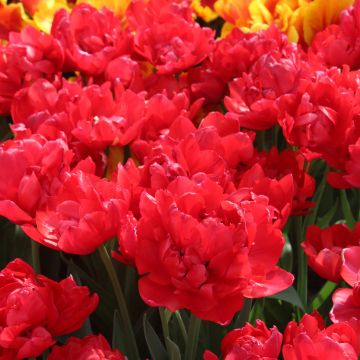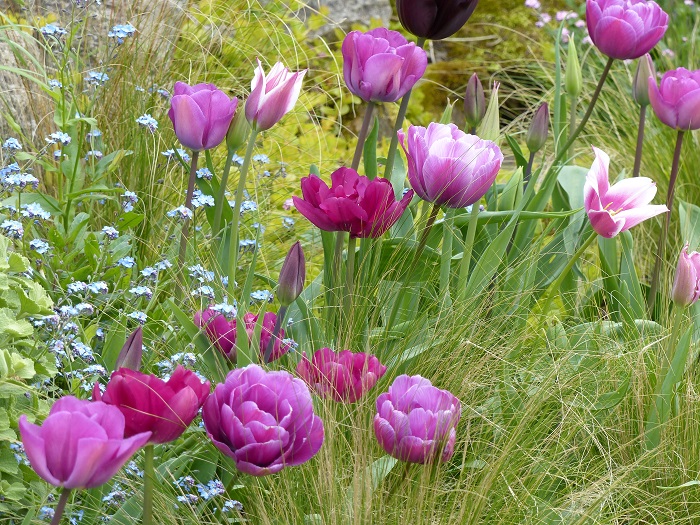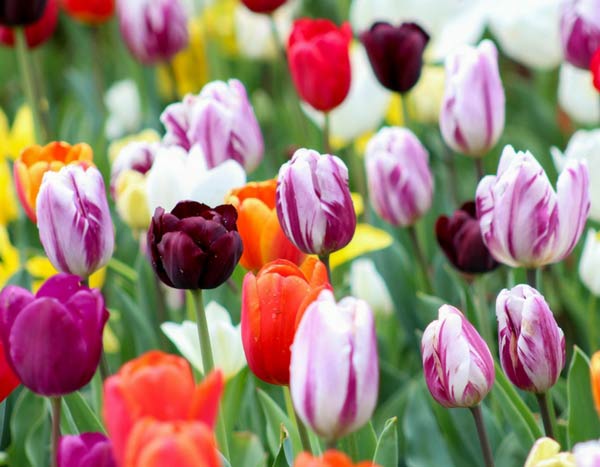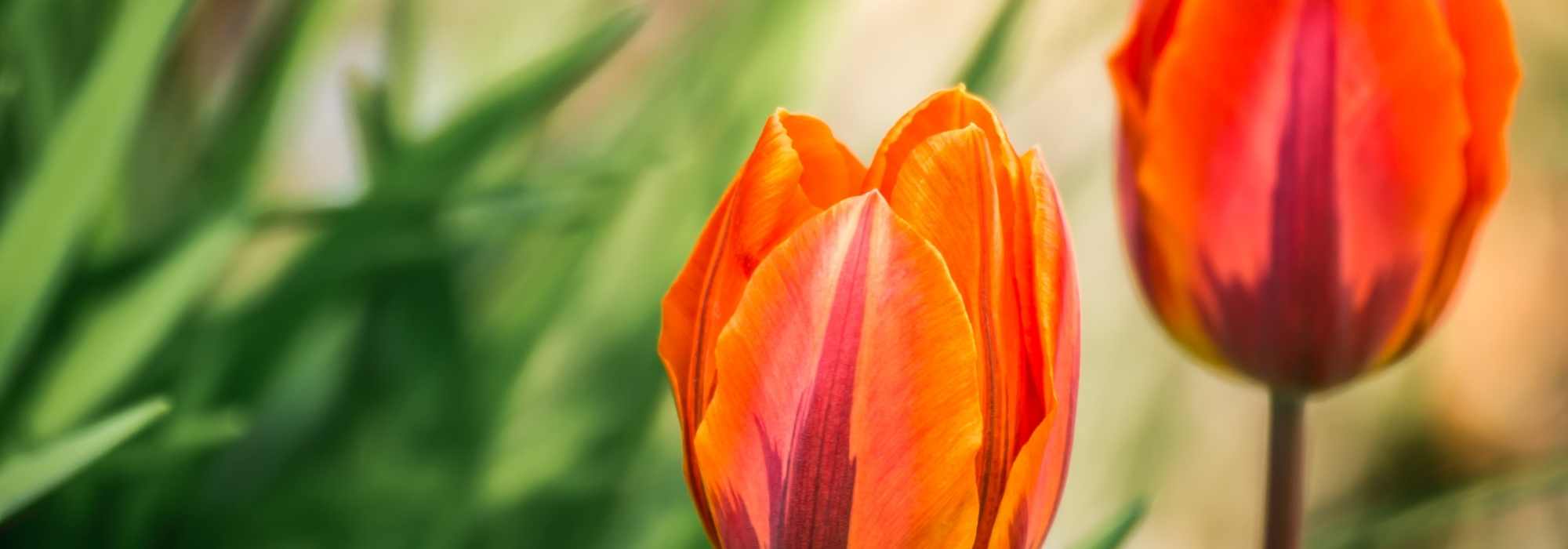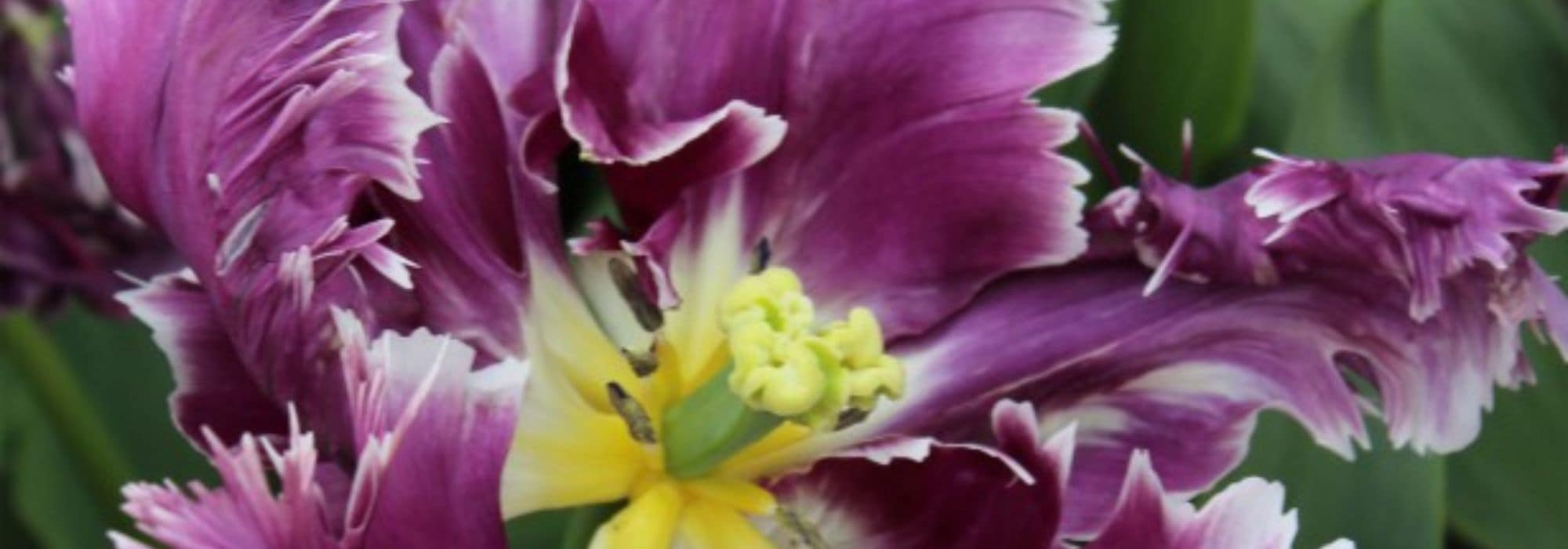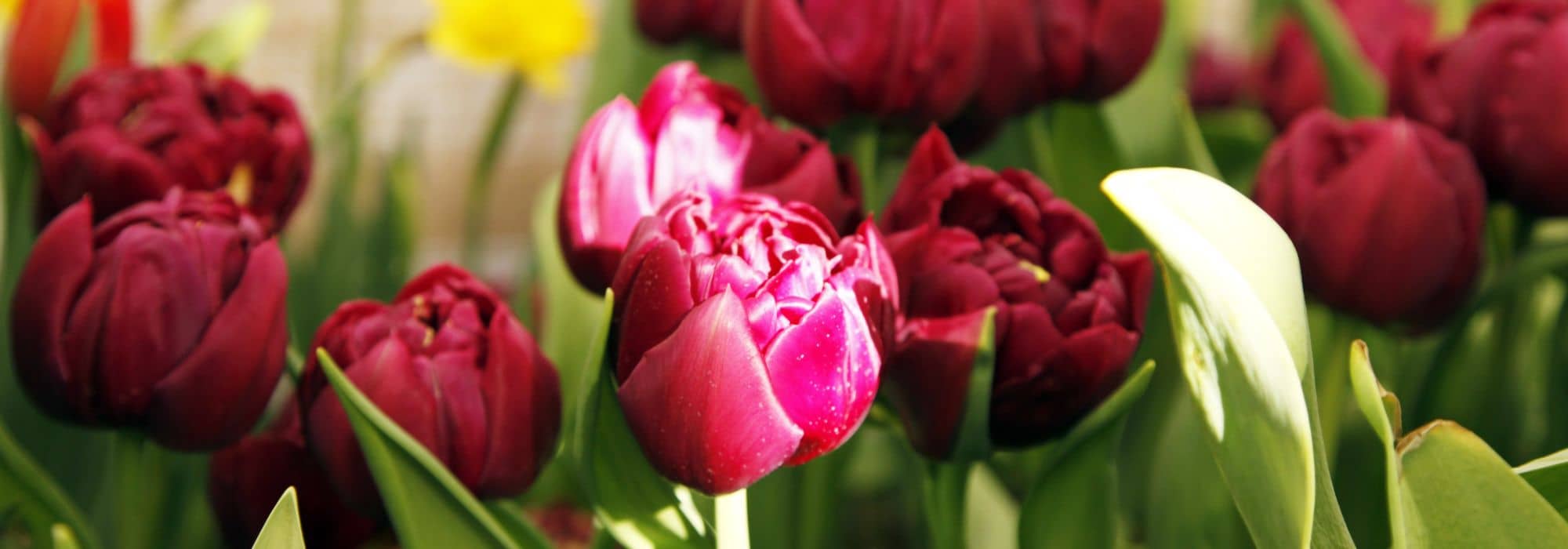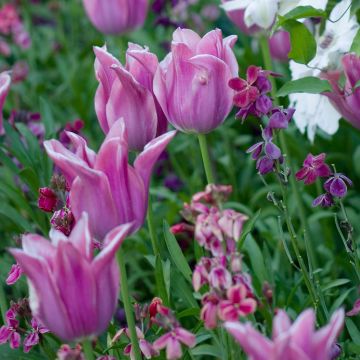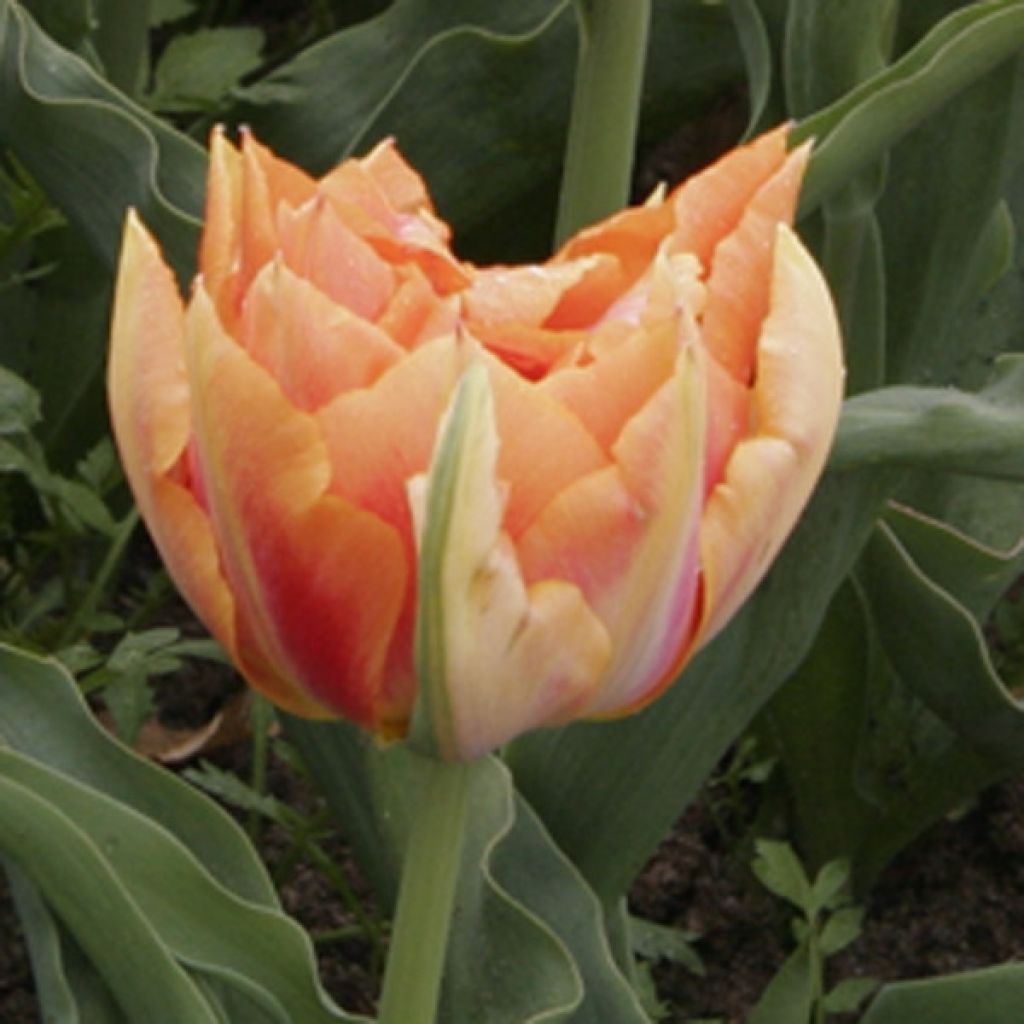

Tulipe Double Hâtive Willem van Oranje
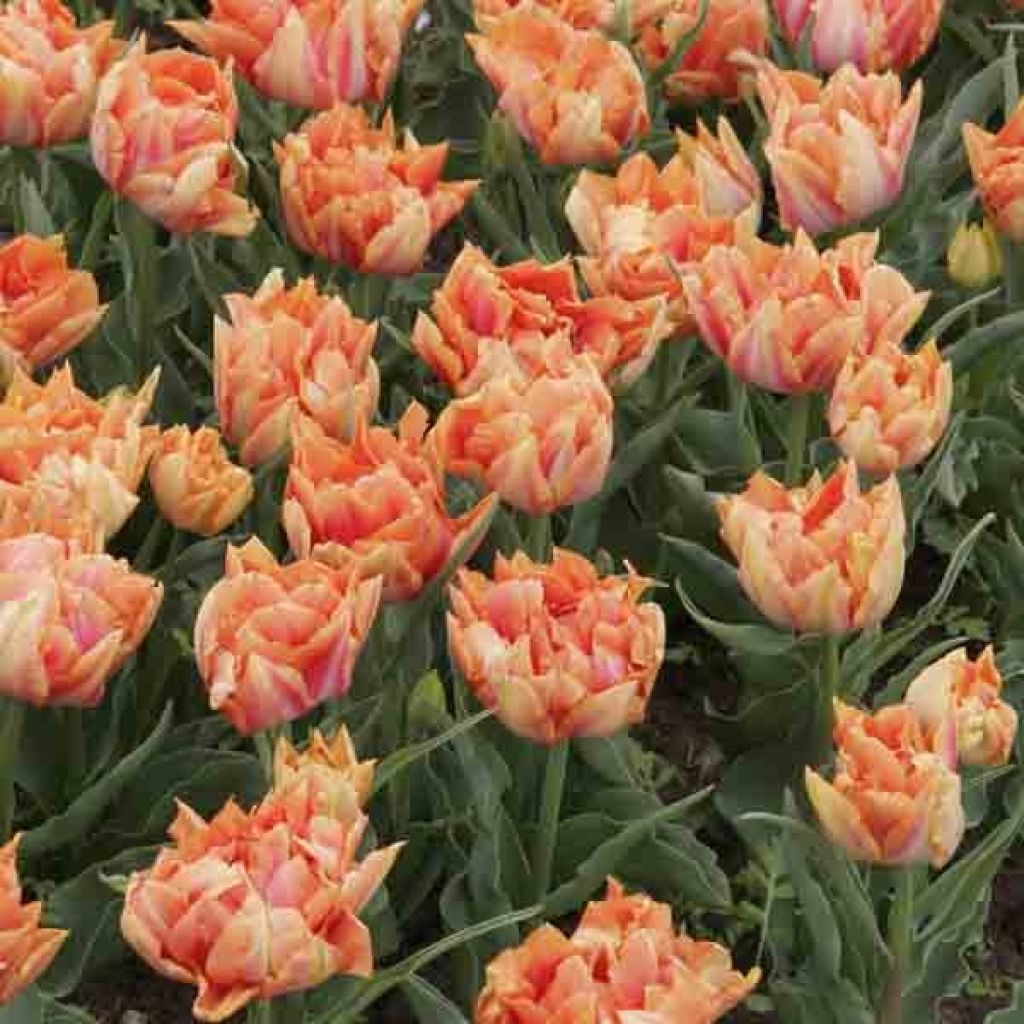

Tulipe Double Hâtive Willem van Oranje
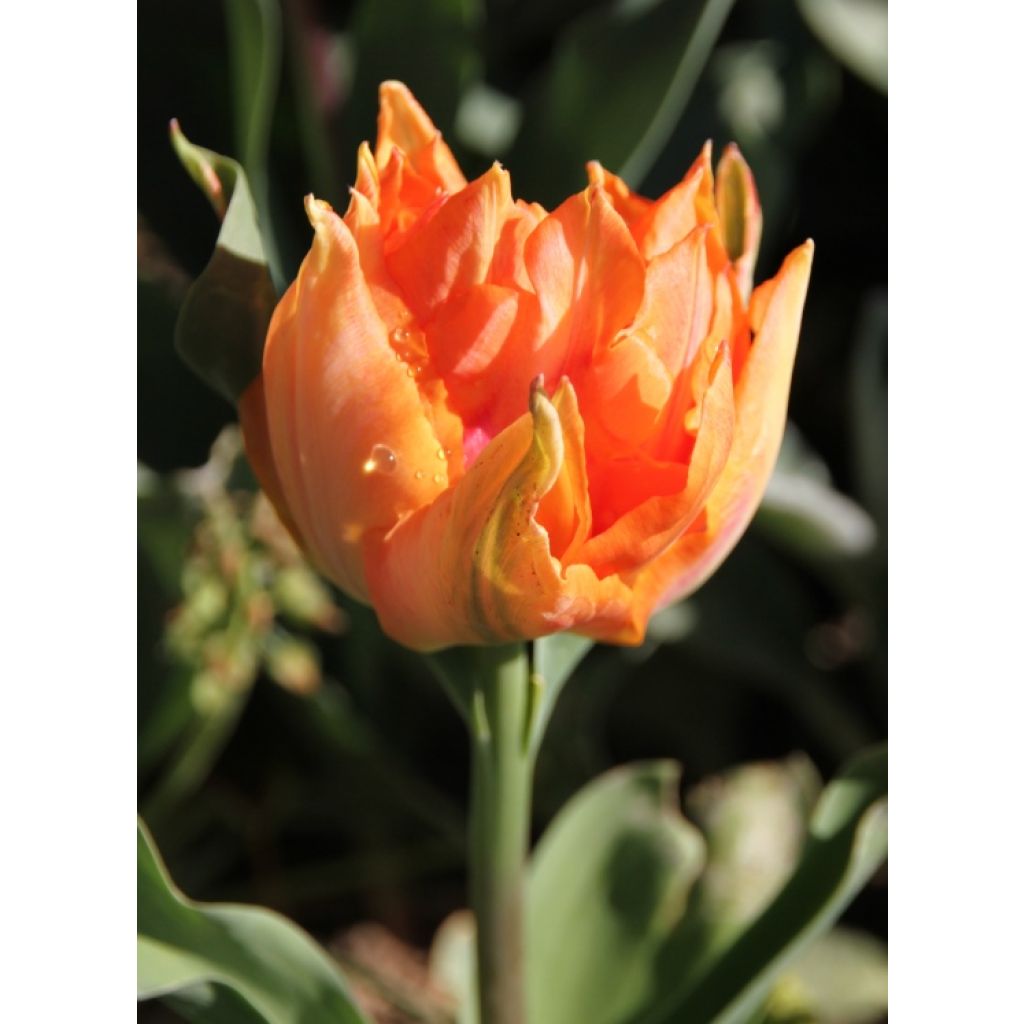

Tulipe william of orange après quelques jours de floraison
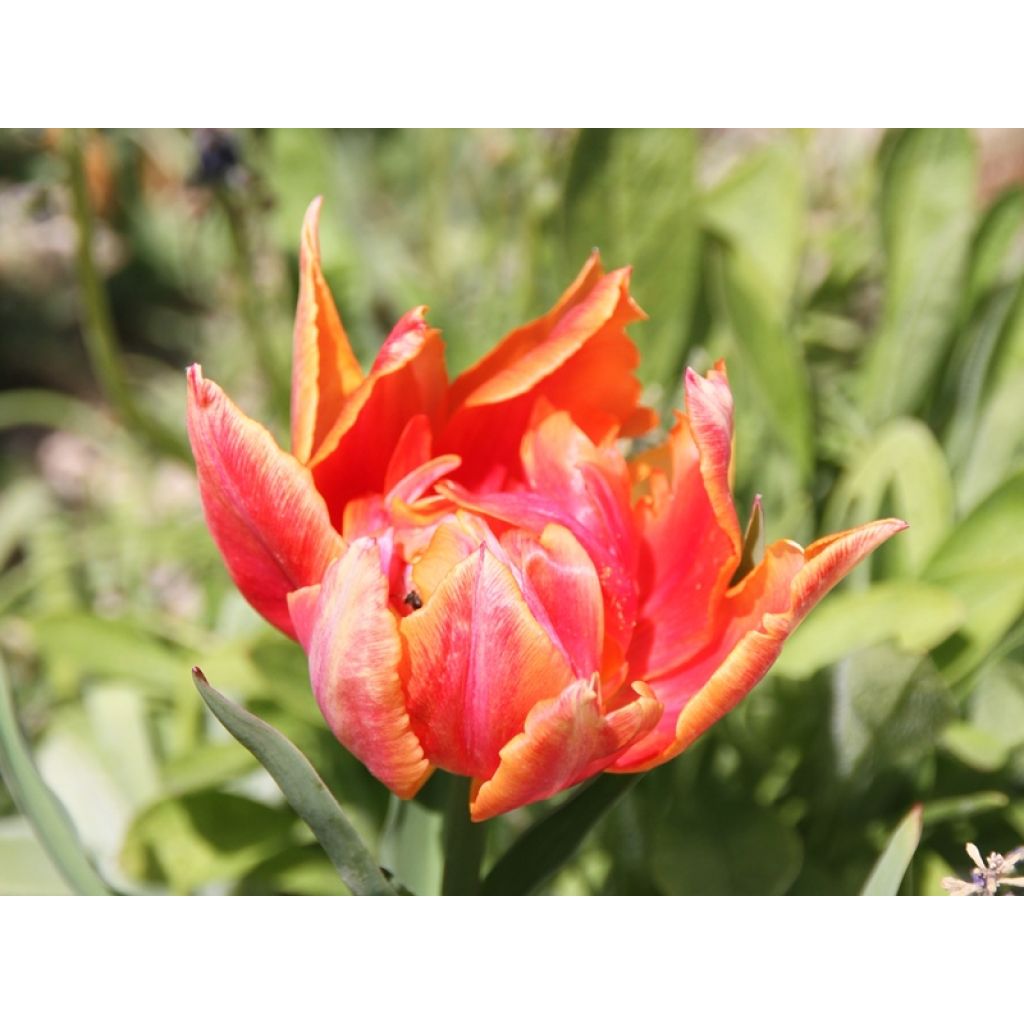

Tulipe william of orange après quelques jours de floraison
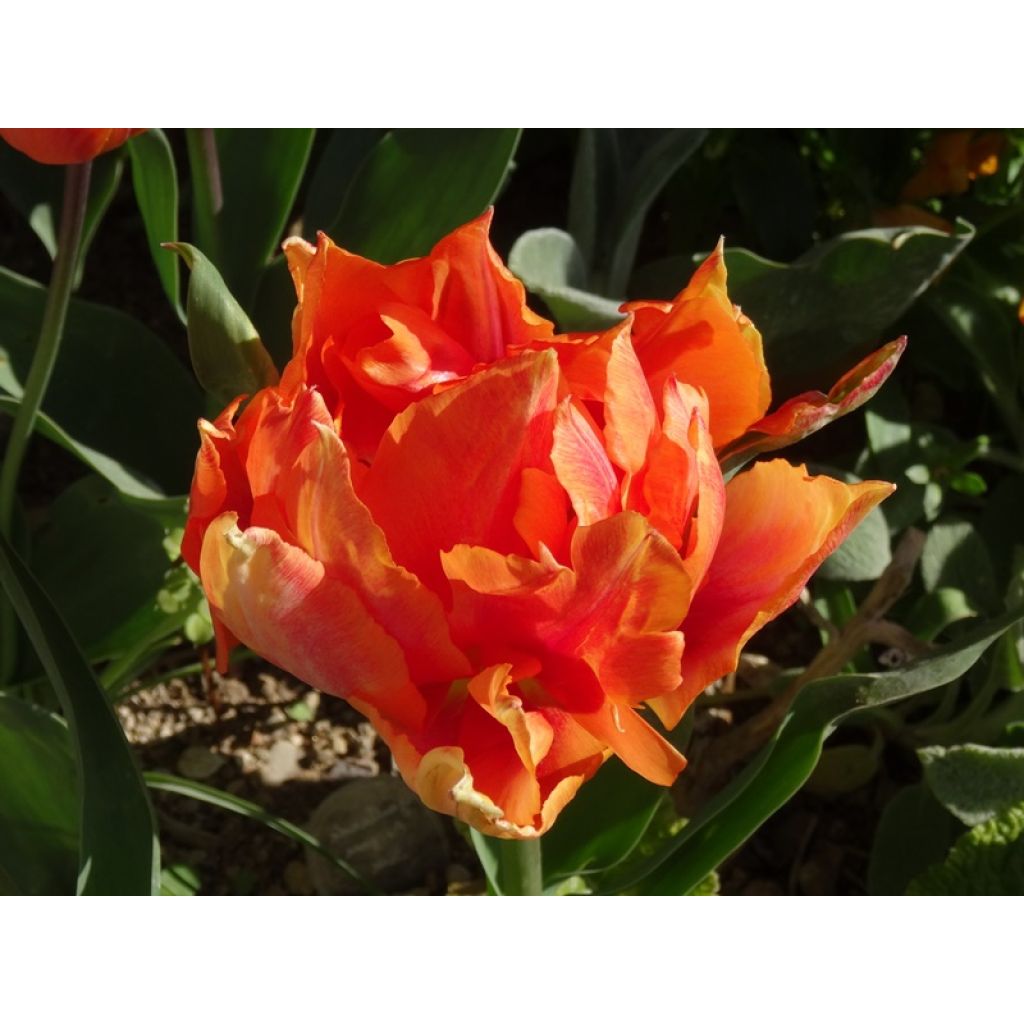

10 jours plus tard, la tulipe a bien foncé
Tulipa Willem van Oranje- Double Early Tulip
Tulipa Willem van Oranje
Tulip
Bulbs in good condition and received promptly. Here we are at the beginning of April and the flowers are blooming. Planted at the base of a purple hazelnut tree, alongside prototype daffodils and tinkled pinkeen, their warm colours are magnificent and create a perfect harmony in my hot-border." Analyse : - "bulbes" a été traduit par "bulbs" qui est le terme approprié pour désigner les plantes souterraines qui produisent des fleurs. - "fleurs" a été traduit par "flowers" qui est la traduction exacte de ce mot. - "plantées" a été traduit par "planted" qui est le verbe approprié pour décrire l'action de mettre une plante en terre. - "noisetier pourpre" a été traduit par "purple hazelnut tree" qui est la traduction exacte de cette espèce d'arbre. - "narcisses prototype" a été traduit par "prototype daffodils" qui est une traduction littérale pour décrire cette variété de narcisses. - "tinkled pinkeen" a été traduit tel quel car il s'agit d'un nom propre et il n'y a pas d'équivalent en anglais britannique. - "leurs couleurs chaudes sont magnifiques" a été traduit par "their warm colours are magnificent" qui est une traduction appropriée pour décrire les couleurs vives des fleurs. - "forment une parfaite harmonie" a été traduit par "create a perfect harmony" qui est une expression idiomatique utilisée pour décrire une combinaison harmonieuse de couleurs ou de formes. - "hot-border" a été traduit tel quel car il s'agit d'un terme spécifique en jardinage et il n'y a pas d'équivalent en anglais britannique.
Luce, 12/04/2020
Special offer!
Receive a €20 voucher for any order over €90 (excluding delivery costs, credit notes, and plastic-free options)!
1- Add your favorite plants to your cart.
2- Once you have reached €90, confirm your order (you can even choose the delivery date!).
3- As soon as your order is shipped, you will receive an email containing your voucher code, valid for 3 months (90 days).
Your voucher is unique and can only be used once, for any order with a minimum value of €20, excluding delivery costs.
Can be combined with other current offers, non-divisible and non-refundable.
Why not try an alternative variety in stock?
View all →This plant carries a 6 months recovery warranty
More information
We guarantee the quality of our plants for a full growing cycle, and will replace at our expense any plant that fails to recover under normal climatic and planting conditions.

Would this plant suit my garden?
Set up your Plantfit profile →
Description
The Willem van Oranje Double Early Tulip, also marketed as the Guillaume d'Orange Tulip, is a unique variety, with a soft and flamboyant colour, which has a medieval charm. With its large illuminated, double, tousled flowers, in a blend of salmon orange and coppery pink, this beautiful variety deserves a low carpet of light foliage from which it will emerge, like a will-o'-the-wisp, in the first beautiful days of April. This old variety is still loved for its early and original flowers with good longevity.
The 'Willem van Oranje' Tulip belongs to the Lily family. Of horticultural origin, introduced in 1933, this plant is a sport of the famous 'Peach Blossom'. It is currently classified in the group of 'Double Early Tulips', whose main characteristic is to have large double flowers, resembling a gardenia, carried by rather short stems. This variety will reach a height of 25-30 cm (10-12in) when in bloom. The flowers are perched on sturdy stems, just above the broadly lanceolate leaves, at least 7 cm (3in) in diameter and stand out in the garden with their orange colour mixed with copper and pink. The slightly fragrant flowers bloom in April, at the beginning of the tulip season.
Because 'Willem van Oranje' is small and early flowering, it pairs particularly well with small spring bulbs such as muscari, small-flowered narcissus, Siberian squills, chionodoxa, and ipheion. While orange flowers are sometimes difficult to pair in the garden, their combination with acid green plumes of euphorbias or white flowers is often remarkably elegant. Myosotis from the Caucasus, Thlaspi, alyssum, and aubrieta can be chosen to accompany this tulip. Double early tulips are famous for their rich colours and sturdy flowers in vibrant hues, in flower beds and bouquets. They are among the most planted varieties, unmatched for bringing early-season charm to pots or sunny gardens. Do not forget to consider the height and flowering period when designing your flower beds, as these can vary significantly from one cultivar to another. It is a good idea to plant a few more bulbs for beautiful cut flowers that last a long time in a vase.
Plant habit
Flowering
Foliage
Botanical data
Tulipa
Willem van Oranje
Liliaceae
Tulip
Cultivar or hybrid
Planting and care
Place Willem van Oranje tulips in a sunny or partially shaded location, sheltered from strong winds, from October to December for spring flowering. Plant the bulbs in light and well-drained soil that has been deeply loosened to a depth of 15 cm (6in) 10 cm (4in) apart, without allowing them to touch, for a mass effect. Remove the flower stems after flowering but let the leaves dry completely before cutting them. Tulips do not like stagnant moisture.
Planting period
Intended location
Care
Planting & care advice
-
, onOrder confirmed
Reply from on Promesse de fleurs
Similar products
Haven't found what you were looking for?
Hardiness is the lowest winter temperature a plant can endure without suffering serious damage or even dying. However, hardiness is affected by location (a sheltered area, such as a patio), protection (winter cover) and soil type (hardiness is improved by well-drained soil).

Photo Sharing Terms & Conditions
In order to encourage gardeners to interact and share their experiences, Promesse de fleurs offers various media enabling content to be uploaded onto its Site - in particular via the ‘Photo sharing’ module.
The User agrees to refrain from:
- Posting any content that is illegal, prejudicial, insulting, racist, inciteful to hatred, revisionist, contrary to public decency, that infringes on privacy or on the privacy rights of third parties, in particular the publicity rights of persons and goods, intellectual property rights, or the right to privacy.
- Submitting content on behalf of a third party;
- Impersonate the identity of a third party and/or publish any personal information about a third party;
In general, the User undertakes to refrain from any unethical behaviour.
All Content (in particular text, comments, files, images, photos, videos, creative works, etc.), which may be subject to property or intellectual property rights, image or other private rights, shall remain the property of the User, subject to the limited rights granted by the terms of the licence granted by Promesse de fleurs as stated below. Users are at liberty to publish or not to publish such Content on the Site, notably via the ‘Photo Sharing’ facility, and accept that this Content shall be made public and freely accessible, notably on the Internet.
Users further acknowledge, undertake to have ,and guarantee that they hold all necessary rights and permissions to publish such material on the Site, in particular with regard to the legislation in force pertaining to any privacy, property, intellectual property, image, or contractual rights, or rights of any other nature. By publishing such Content on the Site, Users acknowledge accepting full liability as publishers of the Content within the meaning of the law, and grant Promesse de fleurs, free of charge, an inclusive, worldwide licence for the said Content for the entire duration of its publication, including all reproduction, representation, up/downloading, displaying, performing, transmission, and storage rights.
Users also grant permission for their name to be linked to the Content and accept that this link may not always be made available.
By engaging in posting material, Users consent to their Content becoming automatically accessible on the Internet, in particular on other sites and/or blogs and/or web pages of the Promesse de fleurs site, including in particular social pages and the Promesse de fleurs catalogue.
Users may secure the removal of entrusted content free of charge by issuing a simple request via our contact form.
The flowering period indicated on our website applies to countries and regions located in USDA zone 8 (France, the United Kingdom, Ireland, the Netherlands, etc.)
It will vary according to where you live:
- In zones 9 to 10 (Italy, Spain, Greece, etc.), flowering will occur about 2 to 4 weeks earlier.
- In zones 6 to 7 (Germany, Poland, Slovenia, and lower mountainous regions), flowering will be delayed by 2 to 3 weeks.
- In zone 5 (Central Europe, Scandinavia), blooming will be delayed by 3 to 5 weeks.
In temperate climates, pruning of spring-flowering shrubs (forsythia, spireas, etc.) should be done just after flowering.
Pruning of summer-flowering shrubs (Indian Lilac, Perovskia, etc.) can be done in winter or spring.
In cold regions as well as with frost-sensitive plants, avoid pruning too early when severe frosts may still occur.
The planting period indicated on our website applies to countries and regions located in USDA zone 8 (France, United Kingdom, Ireland, Netherlands).
It will vary according to where you live:
- In Mediterranean zones (Marseille, Madrid, Milan, etc.), autumn and winter are the best planting periods.
- In continental zones (Strasbourg, Munich, Vienna, etc.), delay planting by 2 to 3 weeks in spring and bring it forward by 2 to 4 weeks in autumn.
- In mountainous regions (the Alps, Pyrenees, Carpathians, etc.), it is best to plant in late spring (May-June) or late summer (August-September).
The harvesting period indicated on our website applies to countries and regions in USDA zone 8 (France, England, Ireland, the Netherlands).
In colder areas (Scandinavia, Poland, Austria...) fruit and vegetable harvests are likely to be delayed by 3-4 weeks.
In warmer areas (Italy, Spain, Greece, etc.), harvesting will probably take place earlier, depending on weather conditions.
The sowing periods indicated on our website apply to countries and regions within USDA Zone 8 (France, UK, Ireland, Netherlands).
In colder areas (Scandinavia, Poland, Austria...), delay any outdoor sowing by 3-4 weeks, or sow under glass.
In warmer climes (Italy, Spain, Greece, etc.), bring outdoor sowing forward by a few weeks.






























